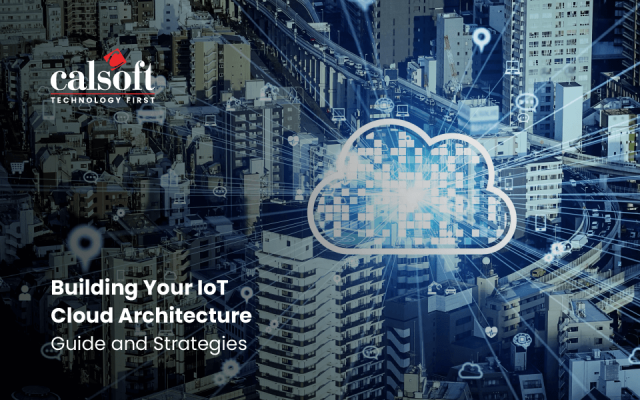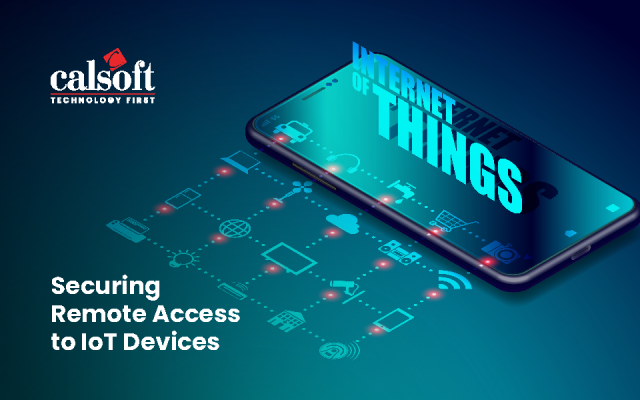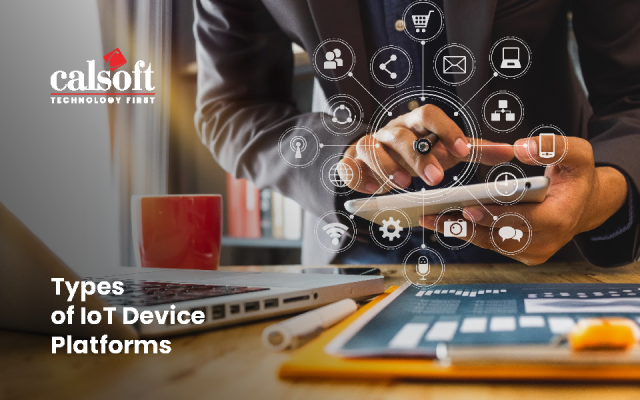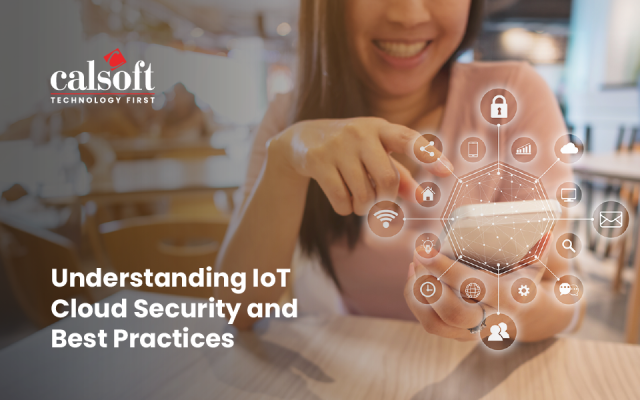The convergence of IoT (Internet of Things) and Product Engineering Services (PES) has led to a symbiotic relationship that has provided a transformative force across the broad spectrum of all industries.
IoT has been a rising technology for the past decade. IoT generates enormous amounts of data from any conceivable resource! Be it a wearable device that tracks our footsteps to monitors our heart rate, integrated into our smartphones – keeping us connected to the important things and people in our lives.
Connectivity and Compatibility in today’s digital landscape are the keys to winning that competitive edge in the market across any industry.
The Internet of Things (IoT) covers a broad span of products from smart homes and on-person wearables to industrial applications, embedded in environments, processes, and operations. They are devices that unite the physical with the online lives and present challenges to businesses as well as consumers. However, their greatest advantage is that, if leveraged well, can help identify patterns that can empower decision-makers to make strategic as well as informed decisions, thereby boosting efficiencies, delivering new insights, and thus providing a competitive edge.
The Workings of Product Engineering Services
For product engineering services to be deployed in IoT solutions, we need to understand how product engineering works.
Product engineering basically is known to bridge the gap between the design and production of a device, item, system, or even process. A product engineer is like the Michelin Star Chef who encompasses the software and hardware design and processes along with improvements and iterations. A systematic approach is required to develop any product based on market research, user feedback, meeting regulations and compliances, and above all the customer’s expectations. Product engineering takes into account usability, cost, dependability, longevity, and serviceability.
As per the reports by Maximize Market Research, the global product engineering services market had reached a staggering $966.22 billion in 2022 and was estimated to grow at a CAGR of 7.4% reaching $1592.60 billion by 2029!
The key influencing factors are:
Independent Service Providers (ISV) leveraging new technologies: Artificial Intelligence (AI), IoT, and cloud adoption seems to be driving innovation and creation and helps reduce costs. For example, AI helps to automate most processes which in turn shortens processing times and thus gives a boost to faster production.
Consumer Demand: Consumers are getting more demanding enhanced technology solutions and enrichment features, smarter homes, and smarter electronic devices, which in turn is driving the churn for faster implementation and improvements
Faster Time To Market (TTM): Organizations outsourcing their Product Engineering Services can concentrate on other areas like marketing, implementing their strategic goals, and executing their business plan without any hindrance thereby TTM is cut down drastically.
Handling Product Complexity: With newer technologies and interconnectedness increasing between devices, faster analytics, and compatible and user-enabled interfaces are in demand, thus giving product engineers the boost to integrate newer features into devices, test, and upgrade, often in real-time.
Modernization of Legacy Software: A lot of effort and time goes into maintaining legacy systems. Product engineering can help companies design in a phased wise manner the modernization of systems that can work with IoT devices, especially in the healthcare and manufacturing industries, and improve outdated systems and processes with automation and real-time updates leading to immediate actions when required.
Product Engineering Services play a pivotal role in bringing IoT concepts to life. These services are known to be the architects behind the scenes, involved in the entire product development lifecycle which involves:
- Conceptualization: Generating ideas is viable for enhancing IoT devices and processes. Demands and preferences based on market research and surveys including technical constraints are considered by product engineers before collaborating with the development team
- Designing and Prototyping: Conceiving how to interconnect systems between the device and processes or applications ensuring functionality, scalability, security, and above all a seamless process with a user-friendly interface to prototyping of the product is essential during the initial phases to ensure it complies with standards and regulations
- Development: Building the device and platforms that will work in tandem, and monitoring every step of development both at the hardware end and the integration of the software is very essential during the development stage
- Testing: Testing the hardware and software to ensure seamless performance, consistency and compatibility, keeping in tune with compliance, standards and regulations demanded by the industry both on the software as well as hardware side is critical to the performance of the product in real-time
- Product Readiness and Deployment: Before final deployment, having a product that is ready for mass-production without defects is essential. Deploying the device in real-time scenarios and ensuring the reliability and safety of the product and guaranteeing the effectiveness of its systems and processes are crucial for its success.
The Essential Components of Product Engineering Services to IoT Solutions
There are certain components of PES and its integration with IoT devices which when implemented can lead to awesome products
Sensors, Data, and Connectivity: IoT devices use a lot of sensors to gather data. When product engineers study the design after market research, a great deal of accuracy is required when integrating sensors into the device, system or process. This results in enhanced data generation that with AI can be analyzed for value-added insights. The flow and connectivity of how the device works and its required output must be considered when designing. Keeping scope for improvement, compatibility with different systems, and upgrades need to be envisioned.
Data Management and Analytics: Data generated from the IoT devices needs to be well managed in terms of storage and security. Designing and incorporating the proper software, the flow of data, and user-friendly interfaces providing for a good mix-n-match with quality hardware helps for great analytics which is required for real-time insights.
Integration and Automation: Due to the number of systems and processes involved in the development of a single product, microservices architecture is often involved and involves APIs for smooth functioning. Approaches, tools, and processes need to be monitored and tested at every step in the development of the product for successful integration which involves retesting and debugging even after deployment.
Security: Data requires protection. Product engineering services must provide for required hardware and software compatibility, including stringent measures to protect data integrity and user privacy. The need to safeguard against potential cyber threats is what product engineering services can bring to IoT devices, systems, and processes.
Scalability and Interoperability: There is a great need for scalability to be built within the IoT devices and systems given the fast-paced technology. For every new feature added, room for enhancement needs to be envisioned, and solutions and updates need to be integrated seamlessly to provide interoperability with several systems.
The Future of IoT and Product Engineering Services
The various sectors that have benefitted and transformed by IoT and Product engineering services include, but not restricted to are, healthcare, manufacturing, transportation, and agriculture. However, there are a few challenges that both IoT and Product Engineering Services could face:
Security: Priority among them is the privacy and security of Data as in healthcare, privacy of data is sensitive and needs to be secure. AI and the ethical use of data also need to be aligned with the various regulations and different standards across various industries from healthcare to manufacturing. Adding to this, weak passwords and inadequately updated patches with substandard device management, can all lead to increased security vulnerabilities in new IoT infrastructure and increase the gaps in protecting the legacy systems to which these devices connect.
Computational and Cloud Storage: Further, how the data is stored and secured is also essential to the performance of a great IoT product. Any product using a myriad of sensors equates to using an enormous amount of computational power. Each sensor needs to store and process the data they collect which can be expensive and require great energy consumption. When an organization leverages cloud storage, IoT sensors can thus seamlessly collect data and send it to the cloud for real-time processing at scale. Further, Gen AI and Large Language Models (LLMs) are trending and adding to the computational power that sensors will be using more and more in the coming future.
Edge Computing and 5G Technology: We are aware that edge computing is known to reduce latency by processing data closer to the source thereby providing quicker real-time responses. And 5G integration can only help boost faster connectivity and thus unlock new possibilities for a variety of applications across various sectors from healthcare to manufacturing, automotive, and aviation, providing for further intrinsic linking between Product Engineering Services and IoT solutions!
In Summary
Product engineering services known as the architects shaping the IoT landscape and ensuring seamless connectivity between devices help to enhance efficiency, intelligence, and user experiences for increased revenues and enriched customer insights. A significant role that product engineering plays in IoT is the ability to create unified and cohesive solutions that can bridge the gap between disparate devices and platforms. Additionally, it also improves functionality, and provides enhanced user experience and efficiency leading to stronger relationships with clients and stakeholders.
Calsoft, being a Technology-First company and a pioneer in software product engineering services, has been a driver helping its customers solve their business challenges using technologies in Storage, virtualization, networking, security, cloud, AI/ML, IoT, and telecommunications domains.
Reference:
[1] https://www.maximizemarketresearch.com/market-report/product-engineering-services-market/122268/
[2] All you need to know about product engineering services. (xcubelabs.com)






